“Trick or treat?!” — the quintessential Halloween phrase that’s recognisable in almost every part of the globe.
For most people, especially for kids, Halloween is the season for enjoying endless sweets. As the tradition goes, kids wander in their neighbourhoods on All Hallow’s Eve, when they can ask around for treats. Youngsters can supposedly pull a prank on anyone who turns them away empty-handed.
But all around the world, there are delicacies that seem more of a trick than a treat to those who aren’t familiar with them. And they’re available all year ‘round…not just on a holiday like Halloween. Here are a few of our freaky finds.
1. Yartsa Gunbu
In Tibet and Nepal, underground caterpillars are infected by a parasitic breed of fungus (Ophiocordyceps sinensis) that literally mummifies the unsuspecting creepy crawlies. When they’re dead and preserved in a shrivelled-up state, locals collect the mummified bugs and sell them as prized snacks called Yartsa Gunbu. This translates to “summer grass, winter worm” in English.
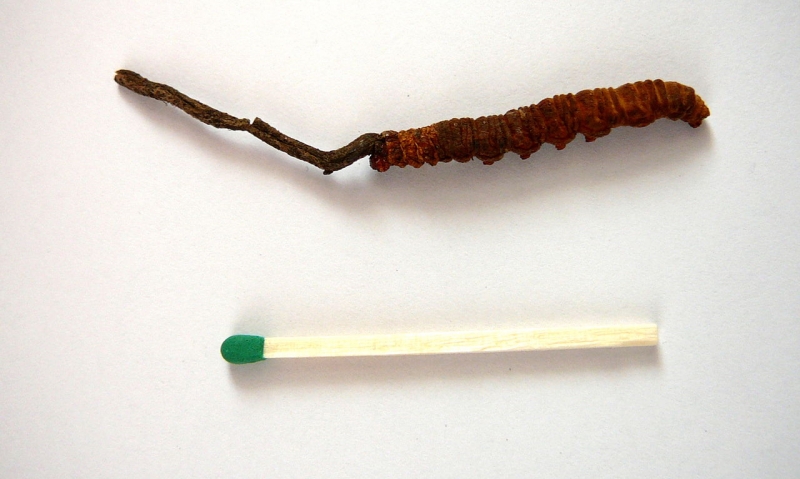
Image credit: Nicolas Merk
That’s not the best part. Once these caterpillars are completely infected by the fungus, their dried-up remains are PUSHED OUT of their bodies. Sounds appetising. Another interesting fact about this delicacy is that it has also been dubbed the “Himalayan Viagra” by traditional healers who package the treat as an aphrodisiac or an elixir for boosting stamina.
2. Odori Don
Japan has its fair share of curious cuisine, but this dish definitely earns a spot on this list. Can you imagine what it’s like eating a “live” squid? It’s as slimy and squirmy as you think. The Odori Don is a rice bowl dish that consists of a dismembered squid, rice, salmon roe, and seaweed. To be exact, only the squid’s brain is taken out while the rest of it is intact so it appears to be whole.
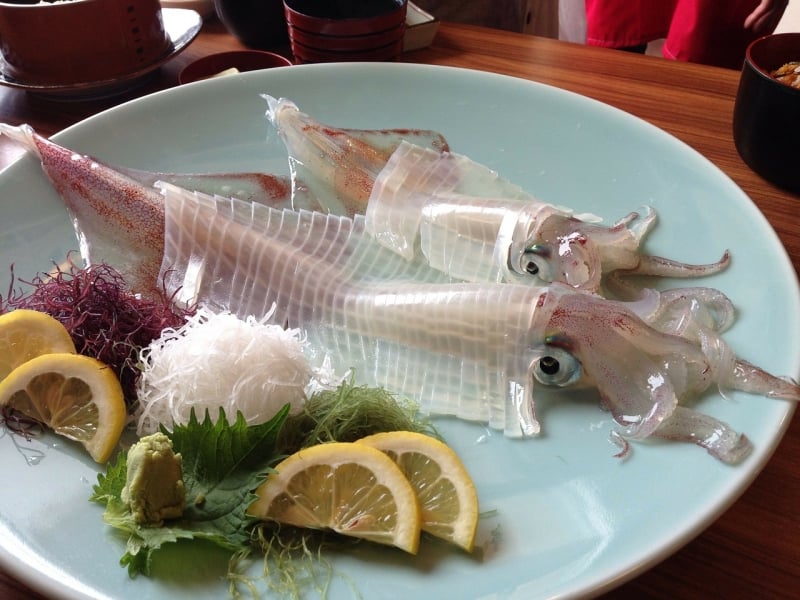
Okay — so the squid that’s used as a topping for the Odori Don isn’t really alive, but it looks very much like it. When soy sauce is poured over the squid, its muscles react to the sodium and potassium content, making it…err…dance. This is why the Odori Don is also known as the dancing squid bowl. They say it’s quite tasty, but watching videos of the squid wriggling around before it’s devoured is enough to make anyone’s stomach turn.
3. Balut
Among the world’s weird snacks, balut is probably one of the most popular. In the Philippines, it is often eaten as a midnight snack, with peddlers selling it only at night. Essentially, it’s street food. Filipinos also love to have it with beer or any alcoholic beverage of their choice. But what exactly is balut and why are most foreigners grossed out by it?

Image credit: shankar s.
Balut is a developing duck embryo. In other words, it’s an underdeveloped duckling that’s boiled way before it’s ready to hatch and is eaten while it’s still in the shell. Refer to the photo above if you’re having trouble visualising the delicacy. It’s a rather soupy and flavourful snack, too, because you get to slurp on the duckling’s embryonic fluid. If you’re lucky, you’ll come across a duckling that’s not too developed yet. But some have grown enough that all parts of it are distinguishable. Poor baby.
4. Sourtoe Cocktail
It isn’t food; it’s an alcoholic drink with a veeery special garnish. The Sourtoe Cocktail in Yukon, Canada is a local attraction that has reached legendary levels. It’s actually more of a tradition and a rite of passage for visitors who take on the daunting task. Why, you ask?
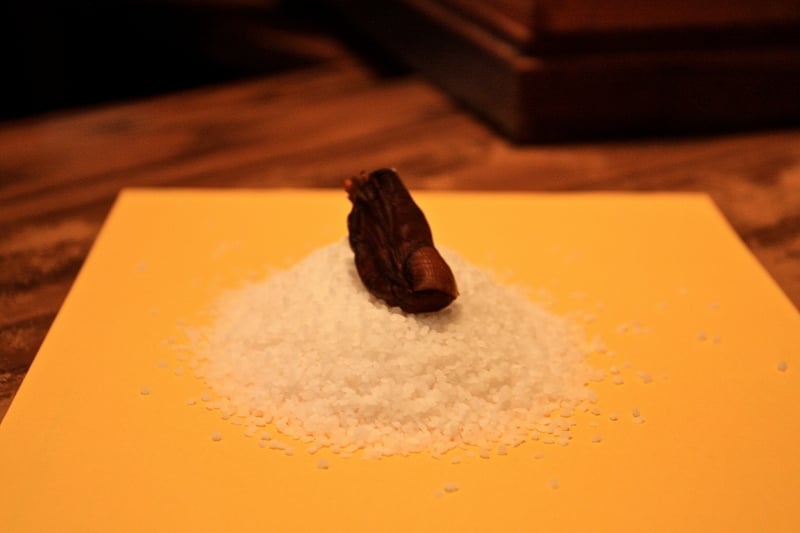
Image credit: TravelingOtter
The drink’s name isn’t far off. As you can imagine, The Sourtoe Cocktail’s garnish is really a dehydrated, blackened toe that has been preserved in salt. Most people order the cocktail with a shot of Yukon Jack, but you can actually choose any drink. There’s only one rule to remember when it comes to the Sourtoe Cocktail: “You can drink it fast, you can drink it slow, but your lips have gotta touch the toe”. Members of the Sourtoe Cocktail Club say it isn’t that bad. Yes, people who’ve tried the drink have a club of their own and if you want to become a member, click here to know which Canadian bar offers it.
5. Svið
I’ve read somewhere before that Svið is “Satan’s face on a plate”, and when you see the dish some of you might just agree. It’s a traditional Icelandic dish that features one-half of a sheep’s head served on a plate, with a side of mashed swede and potatoes to boot. The sheep’s whole head is first singed to a crisp to remove all hair and then boiled until the meat turns soft. They say the key here is to make sure that the meat is tender, but that it isn’t too soft so that the head still retains its obvious shape. The head is then sawed in half so it could be plated accordingly.
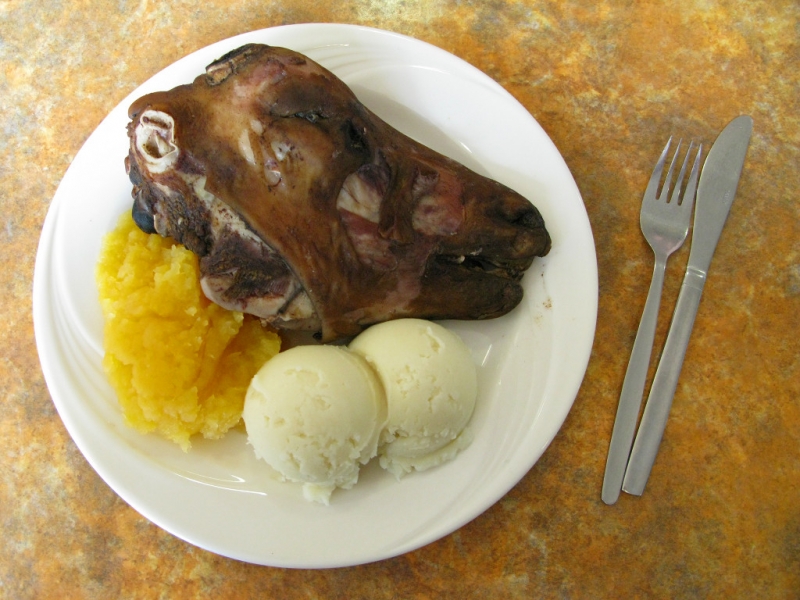
Image credit: Scheenlocke
Locals will tell first-timers not to be disheartened by the sight of the half-head. The meat is tasty and even the eyeballs are a treat. Yum!
6. Casu Marzu
At first glance, Casu Marzu looks harmless; it’s just cheese made from sheep’s milk, after all. But if you do your research, you’ll know that Casu Marzu roughly translates to “rotten cheese”. And by rotten, we mean that it’s infested with maggots.
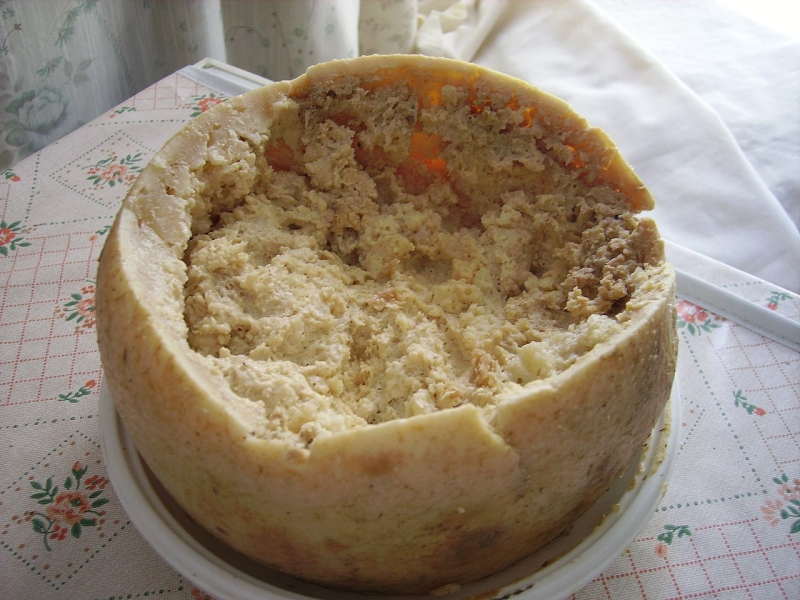
Image credit: Shardan
The thing about Casu Marzu is that flies are allowed to lay eggs on the cheese once it’s curdled or rotten enough. When the eggs hatch, the maggots are released into the cheese and there, they are expected to eat and, well, relieve themselves. So basically, what you are tasting when you eat Casu Marzu is the excrement of a horde of maggots that have been feasting on cheese for the past few months. Casu Marzu is found on the island of Sardinia in Italy. Note, though, that it’s actually illegal because of the obvious health risks that come with ingesting it. You’d probably have to look into the black market to get a piece of that shit, literally.
7. Baby Mouse Wine
Yes, you read that right. And yes, it’s really what you think it is. Baby Mouse Wine is wine infused with whole mice that are barely days old. If you don’t believe us, get your hands on a bottle; the tiny mice found at the bottom won’t lie. They’re left there to make sure that you get the most out of the infusing process — to get the juices continuously flowing, if you will. It’s not really an alcoholic beverage but a tonic.

Image credit: Seweryn Olcowicz
Again, it’s not food, but it sure does belong on this list. If you insist on knowing, though, this drink has a counterpart delicacy — San Zhi Er or three squeaks. It is said that when you eat live mice, you’ll hear three squeaks: First when you pick them up with chopsticks; second when you dip them in sauce, and third when you take that first bite. I think I’ve said enough. You can get a bottle of Baby Mouse Wine in some parts of Southern China. Cheers?
8. Monkey brain
And speaking of China, some areas used to offer monkey brain to willing diners. They say this delicacy was eaten raw and very, very fresh. The monkey was usually kept alive so it would still scream in protest when its head was cracked open. Now that’s just horrific.
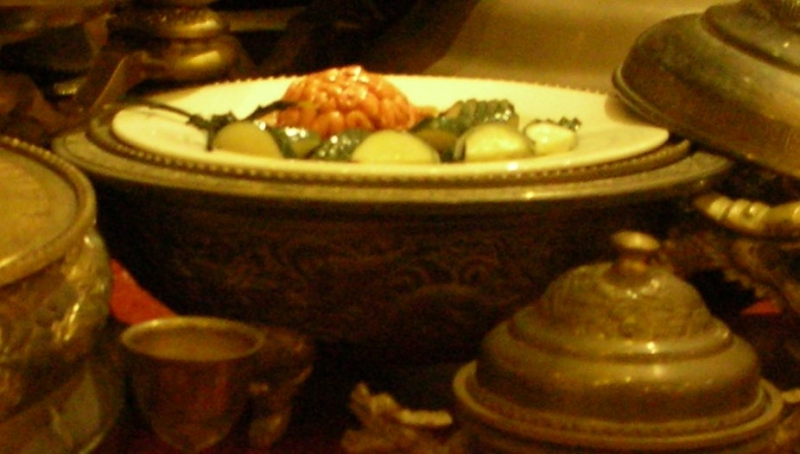
Image credit: Cara Chow
This brutal meal prep prompted animal rights groups to push for the banning of this practice, but word is you can still try it if you know where to look. We’d rather you don’t, though. It’s illegal and there’s just something wrong with devouring something that’s writhing and screaming in pain right in front of your eyes. Most of us are meat eaters, but there’s always a more humane way of consuming only what we need. This dish was popular in the past, though, because it was sold at very high prices. If you order it, it means you’re filthy rich.
9. Tiet Canh
Vietnam’s Tiet Canh would be a vampire’s dream dish. It’s raw blood soup with chunks of cooked meat mixed in it. There are many varieties of Tiet Canh, depending on the blood used. The most common would be made from duck’s blood, pig’s blood, or goose’s blood.
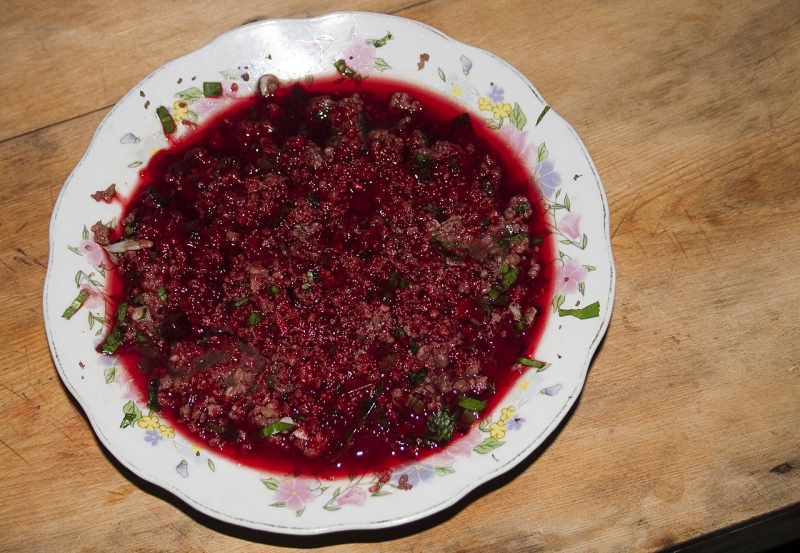
Image credit: Peter & Bara Ruzicka
Keep in mind that this bright-red blood soup isn’t served while it’s still runny. Cooks usually set it aside with fish sauce or a saline mixture so it will coagulate at the right pace. The result? A silky, cool blood pudding that’s rich in protein and served during special occasions.
10. Fried tarantula
This doesn’t need much explaining. In the streets of Cambodia, especially in the touristy area of Siem Reap, visitors will find stalls selling deep-fried creepy crawlies. These street vendors have a wide selection — from crickets to beetles to mealworms. But the standout would have to be the tarantulas.
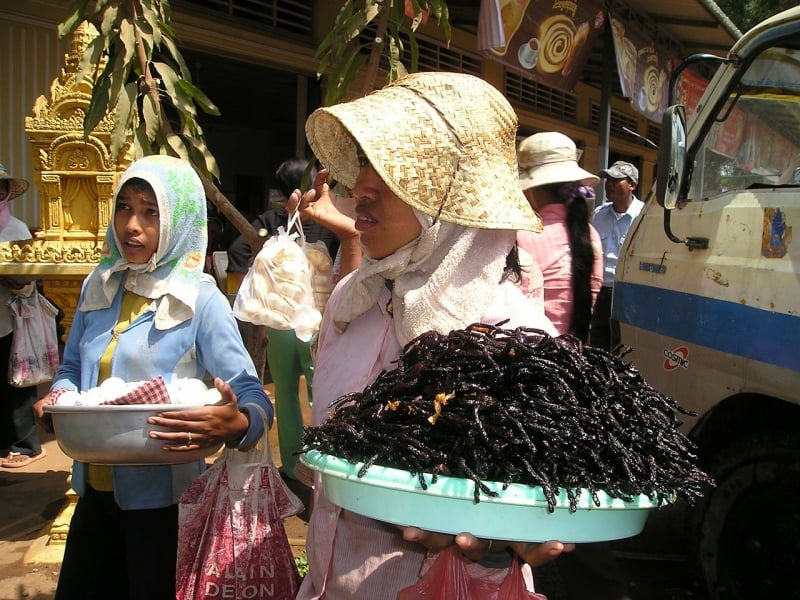
Some people like it, but personally, I think it’s a cross between a cockroach and a squid. It starts out chewy and you barely taste anything odd…until you get a whiff of that cockroach-ey taste that insects usually have. If you don’t know what I’m talking about, then that means you haven’t eaten insects from this part of the globe yet.
11. Escamoles
Mexico has this sought-after delicacy which most people liken to caviar. It’s made of the larvae and pupae of a certain species of ant and it’s called Escamoles. Popular even from the time of the Aztecs, Escamoles originated in Central Mexico. The ant eggs are collected from the maguey plant or the century plant, otherwise known as the Agave americana.
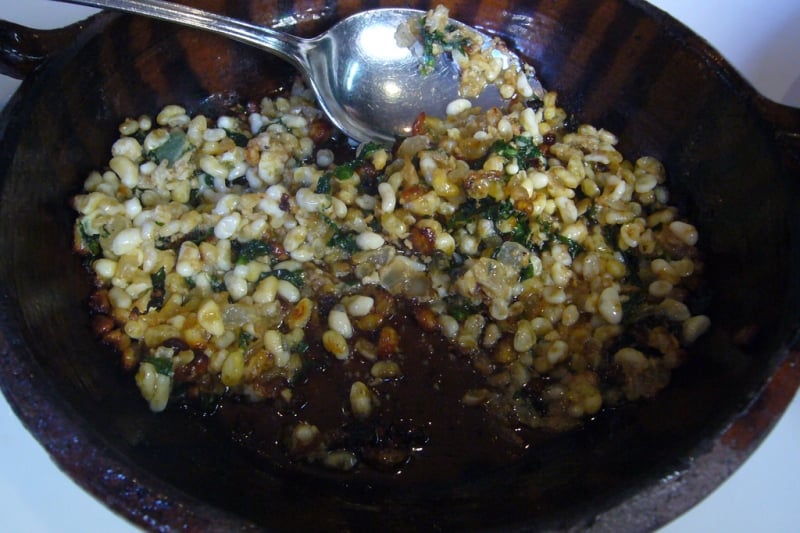
Image credit: Kent Wang
They say Escamoles has a slightly nutty taste, and it’s often fried with butter. If you don’t like them popping in your mouth every chew, ask the cook to make sure it’s fried longer. This’ll make the eggs crunchier, so it’ll be just like eating nuts or corn bits.
12. Cuisse de grenouilles
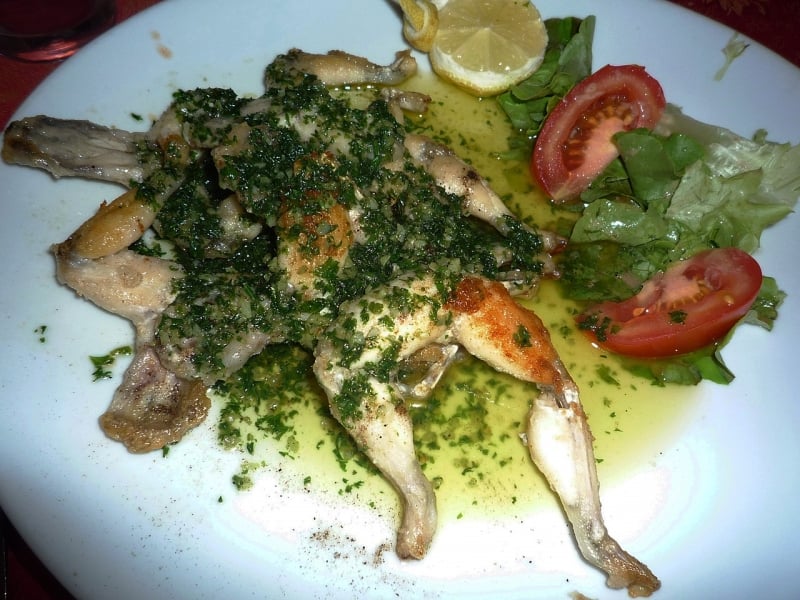
Image credit: Jeremy Couture
…or frogs’ legs. They’re more common compared to the other dishes mentioned here, but they’re also widely known. Frogs’ legs will always be a novel idea for people who don’t usually include amphibians in their diet. They’ll always bring to mind France, where it’s a popular delicacy, but you’ll also find this in several Asian regions. You’ll find that there are many recipes that use frogs’ legs as the main ingredient. Some of the recipes — especially the French ones — will even make you feel like a master chef.
13. Monitor lizard
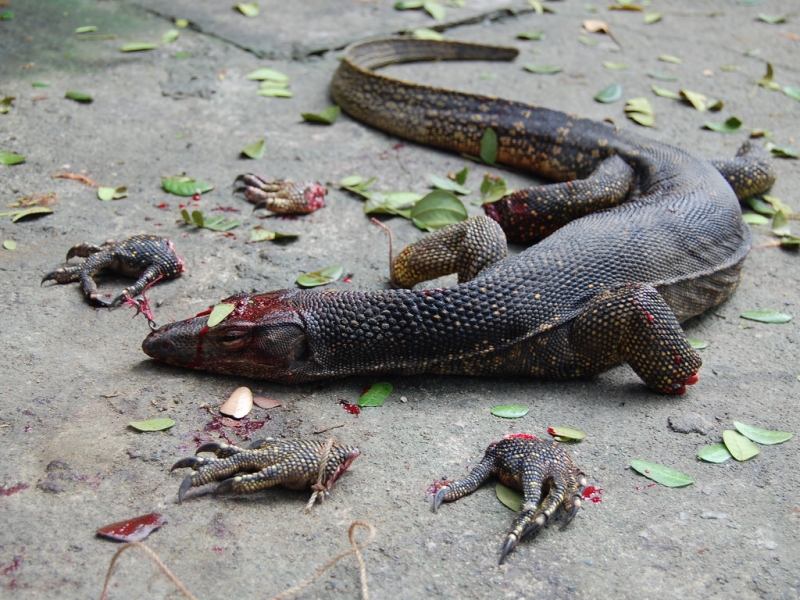
Image credit: Shubert Ciencia
Some people keep lizards as pets, and some people eat them. In other places, they’re protected and left to wander in the wild. In the Philippines, in Malaysia, and even in India, the monitor lizard is a reptile that’s considered edible. It’s cooked in a number of ways, depending on the region, but one thing’s for sure: Locals love it and some of its internal organs are even turned into aphrodisiacs and medicine.
I don’t know about you, but this story kind of messed with my appetite. Have you tried any of the dishes on the list? Let us know if we should, too!
Also read: 10 Food Places That Have Some of The Longest Queues in The World




